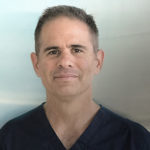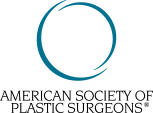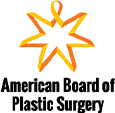
Posted by Laurence Weider on May 22, 2021
One of the most frequent reasons for a consultation at Weider Plastic Surgery is for some type of revision of a prior breast augmentation. However, the reasons for seeking out additional breast implant surgery are numerous. Every patient I see has unique needs and goals, so an individualized plan is developed during the consultation. The reasons for consultation can be broadly divided into those women who still want implants and those who do not.
Women Who Still Want Implants:
There are many reasons why women who currently have implants and wish to have new implants come in for a consultation. The most common reasons include replacement of a ruptured implant or implants, a desire for a change in implant size or type, correction of malpositioned implants and capsular contracture. Sometimes there are multiple overlapping reasons, so each patient’s care must be individualized for her needs and goals.
Implant Rupture:
Although the risk of implant leakage or rupture is low, the risk of it happening increases with older implants. Saline implant rupture can usually be diagnosed with a physical exam as the affected breast will get smaller as the saline implant deflates. Leakage or rupture of silicone gel filled implants can be harder to diagnose as the gel typically stays within the implant capsule. Determining if a silicone gel implant is ruptured usually requires an imaging study such as an MRI, ultrasound or mammogram. MRI is considered the “gold standard” as it is the most sensitive test for determining if a silicone gel filled ruptured. The FDA strongly recommends that women who have silicone gel filled implants obtain periodic MRIs to check for leaking or ruptured implants.
Once a rupture is diagnosed, then we will discuss the options for replacement. This is probably a good time to consider an implant size change if desired and possibly a breast lift if it is indicated. All of the implants that we use at Weider Plastic Surgery come with a ten year warranty. The warranty includes free replacement implants and most also include a stipend to offset some of the costs of implant replacement surgery.
Change in implant size and/or change in implant type:
Over time, many women decide that they wish to change implant size or type of implant or both. This could mean switching to larger or smaller implants. This also presents the opportunity to switch to a different type of implant if desired. During your consultation, other options such as implant profile options (moderate or high profile) will be discussed. As with other reasons for breast implant revision, additional procedures such as a breast lift and/or an adjustment to the implant pocket may be beneficial to your final result. After a discussion and examination with an emphasis on your goals, a plan will be devised in order to achieve a result that you will be very happy with.
Implant Malposition:
Over time, the implant pocket in which the breast implants were placed can have a tendency to stretch out. This is also called implant malposition or “bottoming out.” The result of the stretching is that the positioning of the implant and therefore the shape of the breasts is not ideal. Often times the pocket stretches out to the sides (towards the arms) or in a downward direction. If the pocket stretches out to the sides, it can cause discomfort and the implants “fall off the chest” when lying down on your back. If the implants move downward with a stretched out pocket, then the nipples appear high and there is a loss of fullness in the upper part of the breasts (upper pole). The surgery to fix this is called a capsulopexy or a capsulorrhphy. During surgery, the implants are removed and the capsule, which is the internal scar tissue layer that surrounds the implants, is sutured to improve the positioning of the implants. Sometimes I will recommend that a resorbable mesh is used to help prevent the capsule from stretching again. One such absorbable mesh product is called Galaflex. It is reabsorbed by the body over about a year and is replaced by the body’s own collagen. This is called an “internal bra” because it serves to hold the implants in the proper position from inside the implant pocket.
Capsular Contracture
When a breast implant is inserted in the pocket created by the surgeon, it is normal for an implant capsule to form. That is the body’s reaction to the implant shell. However, in a small percentage of women, the capsule thickens and tightens around the implant. This is called a capsular contracture. A capsular contracture can be mild, moderate of severe. They typically result in firmness of the affected breast, a lack of normal mobility of the implant and excessive fullness at the top of the breast. In more severe cases, there can be discomfort or pain associated with the capsular contracture. Capsular contractures can occur soon after the initial implants are placed or many years later. Late onset of a capsular contracture in a woman with silicone gel filled implants may indicate that there is a ruptured implant.
Mild capsular contractures soon after surgery can sometimes be treated with medication alone. However, a capsular contracture that occurs years after surgery usually requires that the capsule around the affected implant be surgically removed (capsulectomy) and the implant exchanged for a new one. Depending on how long it has been since the initial surgery to place the implants, this may be a good time to replace both implants. That would give you the opportunity to change implant sizes. Additional procedures such as a breast lift or an adjustment to the implant pocket could also be performed at the same time. All of these options will be discussed with you at the time of your consultation.
Breast Implant Revision in Dallas
Dr. Weider has extensive experience in all types of cosmetic breast surgery. He and his staff will perform a personalized consultation to determine which procedure is best for you. Please call us today at (972) 566-8444 to learn more about these procedures and to set up your personal consultation with Dr. Weider.
Dr. Weider, a native of Southern California, is a Board-Certified Plastic Surgeon who has maintained a private practice in Dallas, TX since 1999. After attending Stanford University, he obtained his medical degree (M.D.) from Baylor College of Medicine in Houston. He then completed a one year surgical internship in Los Angeles at Harbor-UCLA Medical Center, followed by a four year general surgery residency in Dallas at Methodist Medical Center, and a two year plastic surgery fellowship in Cleveland at Case Western Reserve University.







